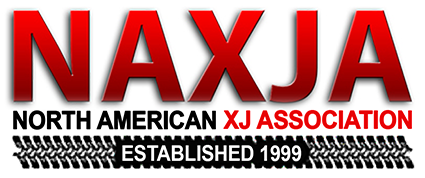A recommendation would have to take the total assembly into consideration, and a few other factors.
The standard shelf stock 4.0L piston choices (SP, K-B Silvolite, F-M, TRW, etc.) do not have a deep enough factory dish to reduce the compression, and assemble the engine with a tight perimeter quench band, with the extra stroke of the 258 crank. Simply assembling the engine with the SP pistons will go together, and will work with 91 octane fuel, but there is additional work that can make a better package.
Much of this additional work is already covered if you buy a quality package (like the AP kit) with a custom piston, but you ask about the shelf stock pistons.
If you go with a shelf stock piston you should consider the later years design, with metric rings, because they have a better skirt design to reduce piston slap. The rings are more $$, but it's a better design. The other coinsideration is to select a hypereutectic cast piston, the strongest and lightest cast piston type (I know the K-B Silvolite is).
The process to tighten the perimeter quench band clearance to factory 4.0L (or tighter) with any of these pistons requires decking the block, something that increases the CR as well.
The result is a need to run 89 or 91 octane fuel, and/or a longer duration cam to bleed off the low rpm cylinder pressure (and lose some potential power). The potential loss of low rpm power is a relative concern, because these combinations will still put out 200+ lbft of torque off-idle.
This is the basic budget stroker package. The detonation potential with the high CR and high compression pressure at low rpm has demanded fine tuning of the ignition (where the Renix has an advantage), fuel flow tuning (fat injectors and adjustable regulator), and attention to the cam selection (the stock cam is almost guaranteed to ping). An owner who simply wants to throw the assembly together and expect it to run with no fine tuning, like the factory 4.0L (with more power), will probably be better off buying a kit with a custom piston.
The improvement options at this point (with the 258 rod) are to increase the dish or chamber volume (custom piston or head machining) to lower the CR, or ... not deck the block and use a fat head gasket to increase the quench band clearance to something greater than 0.110" (make the assembly non-quench compliant). Both methods reduce the CR to allow for 87 octane operation.
The larger piston dish (machining or a custom piston) keeps the combustion chamber shape compact and lowers the CR. This is how most modern engines are designed, because it improves power and fuel economy, and lowers emissions. This is what the custom pistons accomplish (with either rod).
The non-quench assembly runs the risk of higher emissions and a long term potential for detonation if the chamber builds carbon deposits (deposits that will possibly reduce the quench into the range where detonation could be a problem). Modern engines and modern fuel run fairly clean, so it's not likely to be a problem until really high mileage (150K+).
The difference in power between these configurations is probably not that great (not noticable unless you instrument the package). The same lack of significant power difference can be said of a comparison between the long and short rod packages (not much difference). There is a lot of noise about the short rod being less reliable, and the long rod a better potential for power, but there are many 300K mile 258's and many very happy short rod I6 racers who will tell you the power is more than adequate.
This takes us back to your question. The combination will work if you have the builder consider the compromises to balance CR/Cam/Quench/fuel. Dino's pages summarize what has been proven to work with the power estimate results from plugging the info into Desktop Dyno. The only reported drawback is the attention to tune the finished assembly properly and the possible need to select slightly rich injectors (more likly with the Mopar MPI, less so with the Renix).
My opinion is, that a custom piston (a J-E like Greg's 258 rod stroker) is a better choice for the flexibility it allows, by having the proper chamber/dish volume. A custom piston consideration opens the door to the long rod assembly (like those provided by AP). Either custom piston route is a forged piston that will easily handle the abuse of N2O, or high rpm (if you incorporate head work). I read people who dislike forged pistons because of the reported noise and greater cylinder clearance, but IMO a high performance engine should run a forged piston (I have never had a problem).
If Jamie plans to run N2O and larger valves with beneficial porting and a healthy cam the answer is a forged piston (no question). The step past bolt-on performance, and into the cam and head improvements, are where dramatic power increases occur (and more attention to fuel and ignition tuning). The power improvement of swapping the cam to one of the larger grinds (larger than the Crane 901') and cleaning up the ports is noticable (butt dyno as well as ET slips) once the fuel delivery is matched (larger injectors). The AMC six with MPI is fairly forgiving with a large cam and large injectors (you will not lose much low rpm power by building for the 4000-5500 rpm range).
